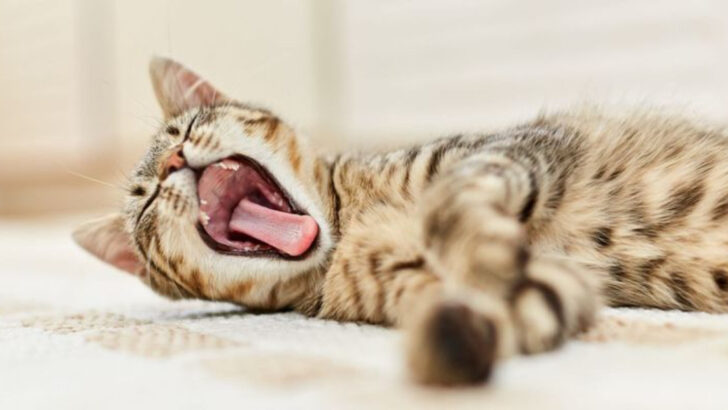If your cat could talk, it might be screaming.
Cats may have a cool, mysterious vibe—but when they feel threatened, their behavior flips in ways that are hard to ignore… if you know what to look for.
Maybe they’re hiding more, lashing out, or suddenly refusing the litter box like it’s cursed. These aren’t quirks. They’re clues. Your cat’s home is supposed to be their kingdom, but when something feels off, they react—and sometimes, those reactions are quiet cries for help.
Their whiskers twitch with ancient instinct. If the space around them feels unsafe, their stress goes sky-high—and so does yours.
Here are 16 red flags that your cat might feel unsafe in its own home, and what those signals could mean behind the fur and purrs.
Hiding More Often
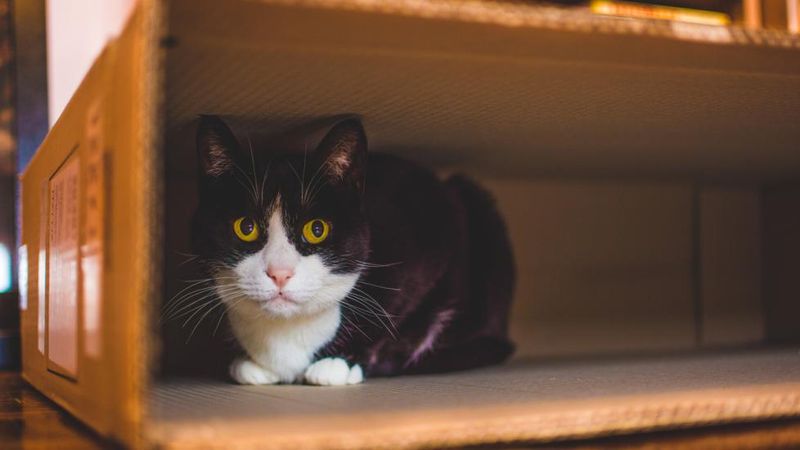
Cats may retreat to hiding spots more frequently when they feel unsafe. Imagine a cat that once roamed freely but now prefers to stay under the bed or behind the couch. This change in behavior can indicate fear or anxiety.
Hiding could result from changes in the household, such as new pets or visitors, which may unsettle your feline. It’s vital to observe their hiding habits. A cat hiding more than usual might be saying it doesn’t feel secure in its territory.
Consider providing a safe space with familiar items to reassure your pet.
Increased Aggression

Aggression in cats, manifesting through hissing, swatting, or biting, can be a distress call. If your furry companion suddenly reacts aggressively, it might feel threatened in its environment.
Such behavior could stem from tension with other pets or even household noise. Picture a cat that was gentle but now lashes out unexpectedly. This shift illustrates discomfort.
To address this, identify potential stressors and minimize them. Create a peaceful environment, ensuring your cat feels secure and not cornered, which helps reduce its perceived threats.
Changes in Litter Box Habits
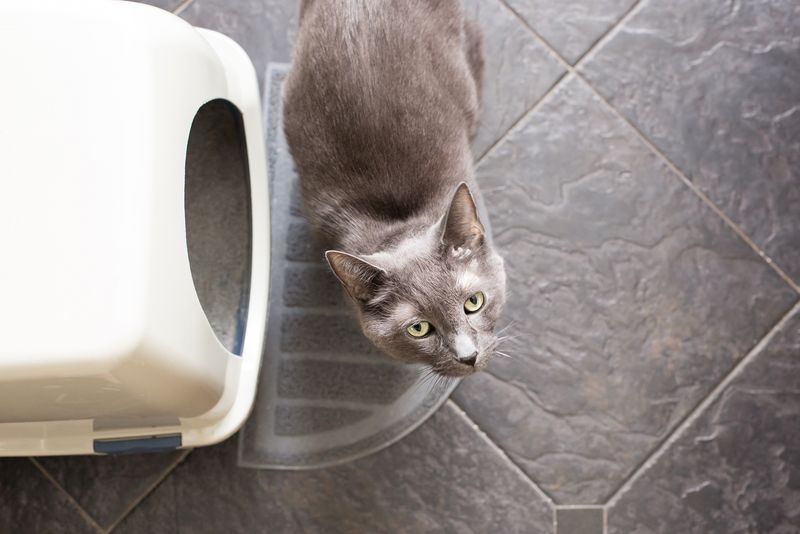
When a cat alters its litter box routine, it might signal distress. Imagine a cat that used to use the litter box consistently but now chooses other areas. This behavior could indicate anxiety or physical discomfort.
Consider factors like a new litter type or box relocation causing unease. Sudden changes in routine or environment may trigger this response.
Ensure the litter box remains in a quiet, accessible location. Regular cleaning and maintaining a familiar setup can ease your cat’s distress, encouraging a return to its usual habits.
Excessive Grooming
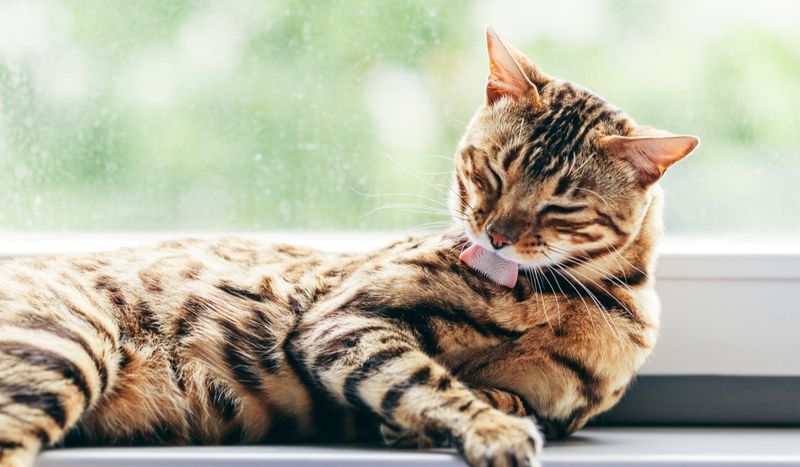
Excessive grooming can be a sign of stress in cats. Picture a cat grooming its paws or belly obsessively. This behavior, while part of natural grooming, could indicate underlying anxiety if excessive.
Stress, boredom, or environmental changes often trigger this. Imagine a cat that used to groom leisurely but now spends hours cleaning. This may point to an attempt to self-soothe.
Providing mental stimulation with toys and creating a stress-free environment can help reduce this behavior. Ensuring companionship and interaction is key for your cat’s comfort.
Loss of Appetite
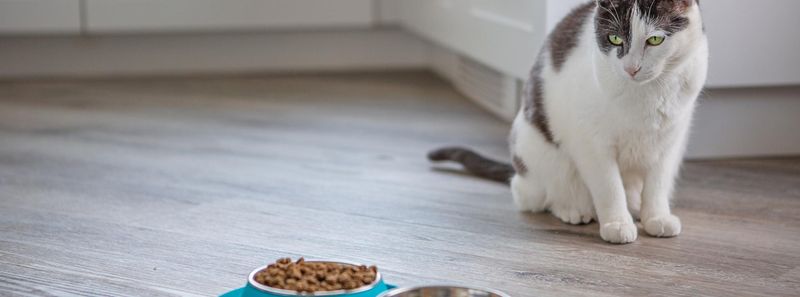
A sudden decrease in appetite in cats can be alarming. Consider a cat that eagerly awaited meals but now ignores its bowl. This could indicate stress or illness, making it crucial to monitor.
Stress factors, like changes in food or environment, might be at play. Picture a normally hungry cat suddenly uninterested in eating. This shift may reveal unease.
Consult with a vet if the behavior persists, ensuring there’s no underlying health issue. Providing a calm, routine feeding environment can often encourage normal eating habits.
Vocalizing More Than Usual
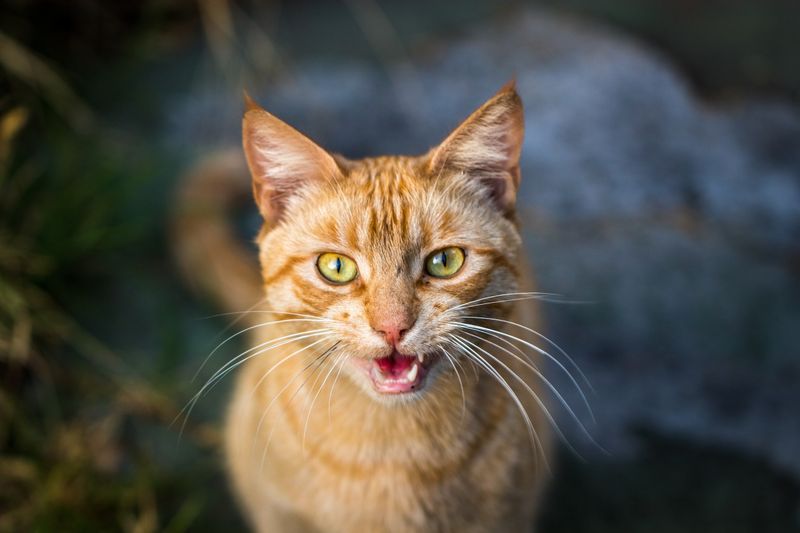
Increased vocalization in cats can signal discontent. Picture a normally quiet feline now meowing persistently, especially at night. This could be a plea for attention or an expression of anxiety.
Changes in the environment or routine often prompt this behavior. Imagine a cat that suddenly starts vocalizing more, indicating discomfort or loneliness.
Ensure your cat has access to comforting spaces and companionship. A consistent daily routine can also help. Engaging with your cat through play might alleviate its need to vocalize excessively.
Scratching Furniture Excessively
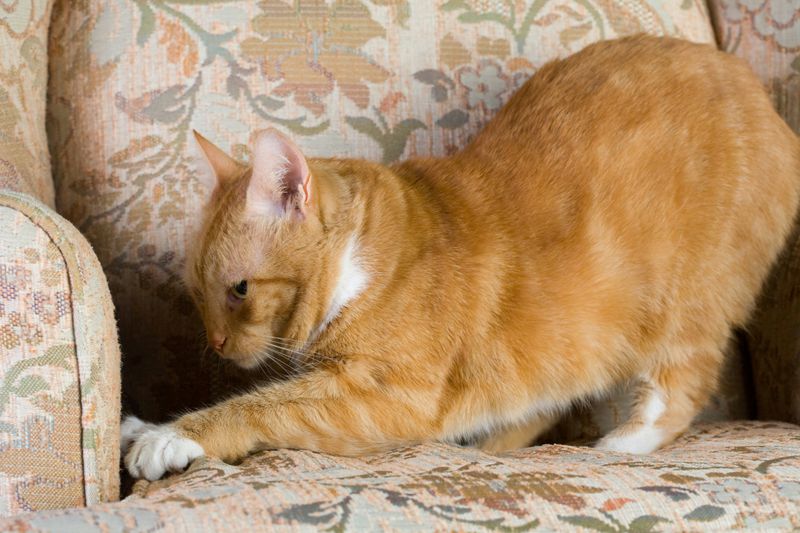
Excessive scratching of furniture can be a stress indicator. Picture a cat vigorously scratching the couch, more than its usual routine. This behavior might stem from anxiety or territorial insecurity.
Environment changes, such as new furniture or scents, can trigger this. Consider a cat that suddenly claws more frequently, showcasing unease.
Providing scratching posts and enriching toys can redirect this energy. Ensuring the cat feels its territory is secure can minimize stress-related scratching, protecting your furniture in the process.
Avoiding Certain Areas
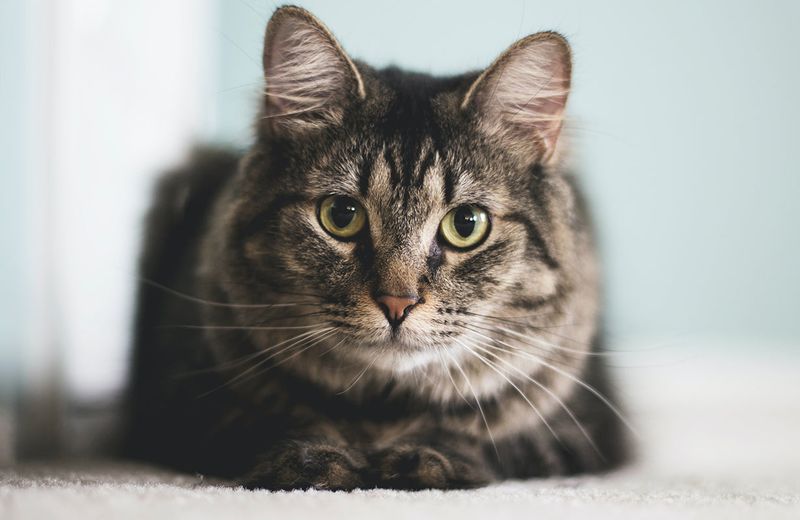
When a cat avoids certain areas, it might signal fear or discomfort. Visualize a cat that used to explore freely but now hesitates near specific rooms. This behavior can indicate an association with negative experiences.
Changes in the environment, like new furniture or scents, might cause this avoidance. Imagine a cat that suddenly avoids an area it once loved.
Identifying and removing stressors in those areas can encourage exploration again. Gradual reintroduction with positive reinforcement can help restore the cat’s confidence.
Frequent Vomiting
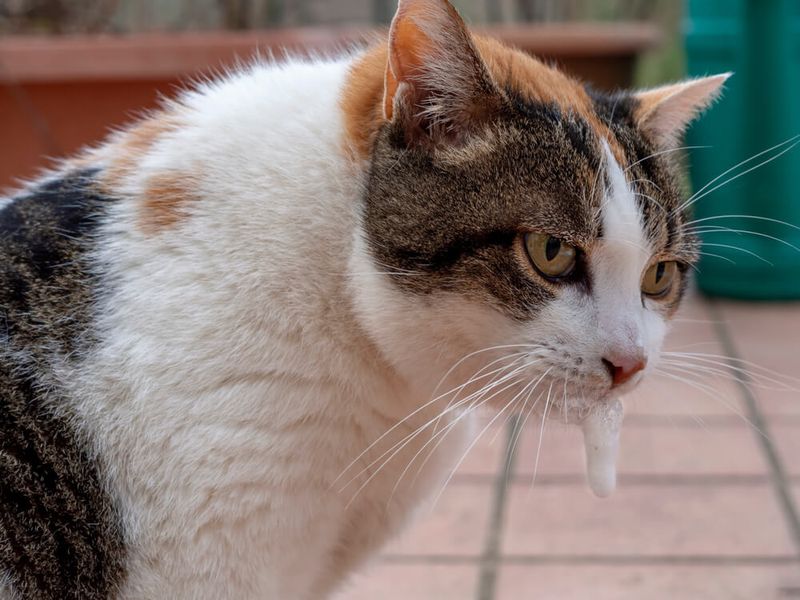
Frequent vomiting in cats could be a stress response. Visualize a cat that starts vomiting more often than usual, seemingly without dietary changes. This could indicate anxiety or an underlying health issue.
Stressful events or alterations in diet and environment might trigger this. Consider a normally healthy cat suddenly experiencing frequent vomiting.
Consulting a veterinarian is crucial to rule out medical problems. Reducing stressors in the home can also help alleviate this issue, ensuring the cat’s well-being and comfort.
Overeating or Weight Gain
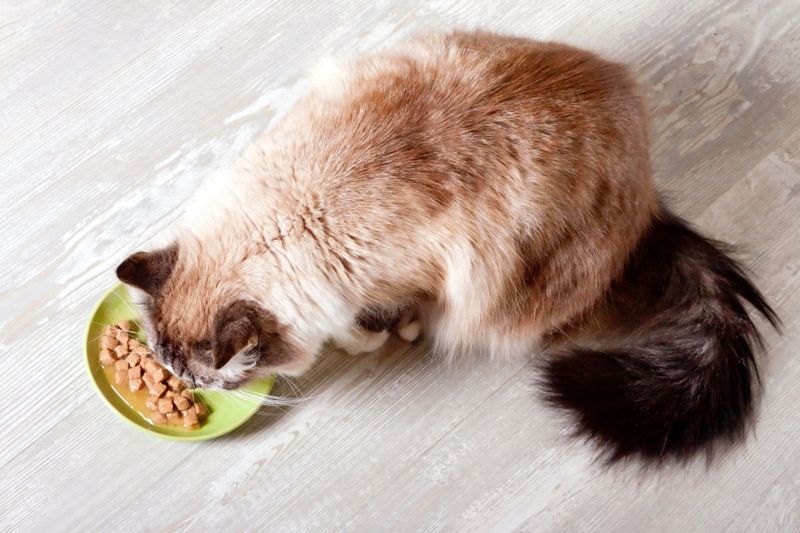
Overeating or sudden weight gain can indicate stress in cats. Imagine a cat that once ate in moderation now constantly seeking food. This behavior might stem from anxiety or a need for comfort.
Changes in routine or emotional distress often cause overeating. Picture a cat that turns to its food bowl more frequently than usual.
Monitoring the cat’s diet and providing a balanced feeding schedule can help. Ensuring mental and physical stimulation through play reduces stress-related overeating.
Change in Sleeping Habits
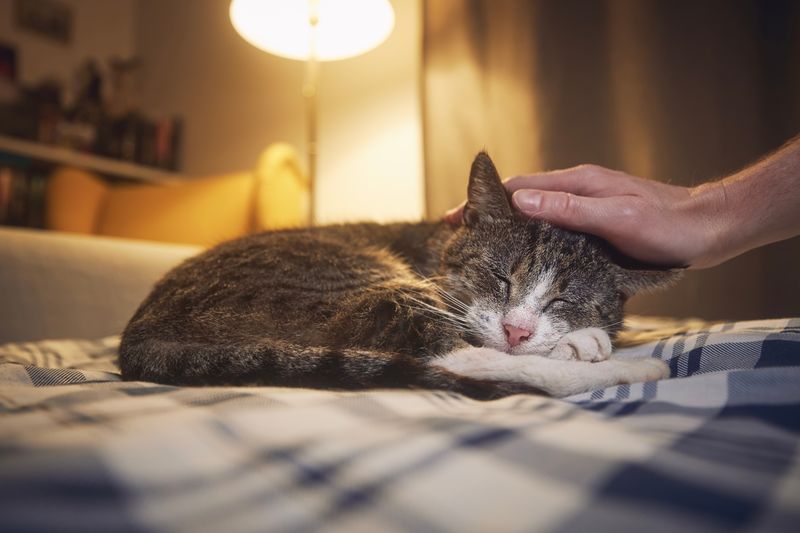
Alterations in sleeping habits can indicate insecurity in cats. Envision a cat that once slept soundly on its bed now choosing unusual spots.
This behavior might reveal stress or discomfort. Imagine a cat that prefers high shelves or hidden corners over familiar resting places. It could feel threatened.
Providing a serene sleeping environment with familiar scents and bedding can help restore its sense of security, encouraging a return to normal sleeping patterns.
Lethargy or Lack of Play
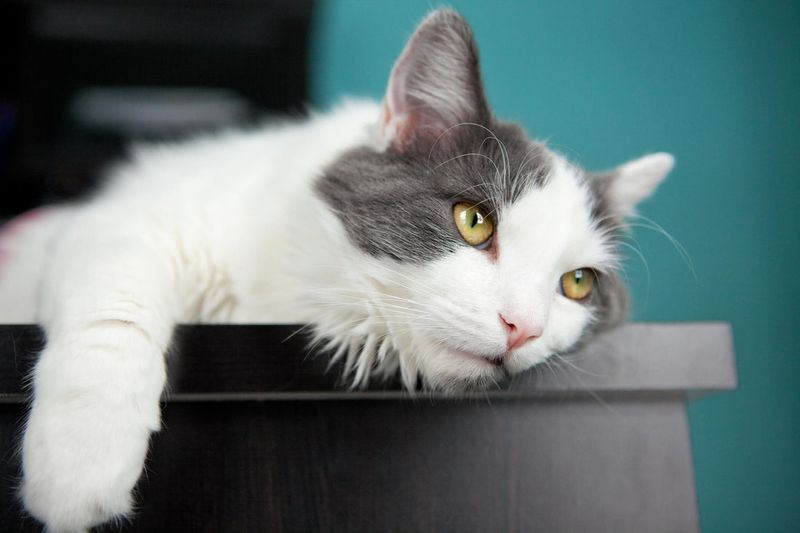
Lethargy or a lack of playfulness can indicate something amiss. Picture a once-energetic cat now disinterested in toys. This change might signal stress or health concerns.
Consider environmental changes or emotional stressors triggering this behavior. Imagine a playful cat suddenly lacking its usual enthusiasm.
Engaging your cat with interactive play and maintaining a stimulating environment can reignite its interest, addressing potential stressors and restoring energy levels.
Panting or Respiratory Changes

Panting or noticeable respiratory changes might be stress-related. Imagine a cat that starts panting like a dog, especially after minimal exertion. This could indicate anxiety or discomfort.
Environmental factors like heat or stress might trigger such responses. Consider a cat that displays abnormal respiratory signs.
Consulting a veterinarian is essential to rule out health issues. Ensuring a comfortable environment with ample ventilation can help alleviate stress-induced respiratory changes.
Changes in Eye Contact
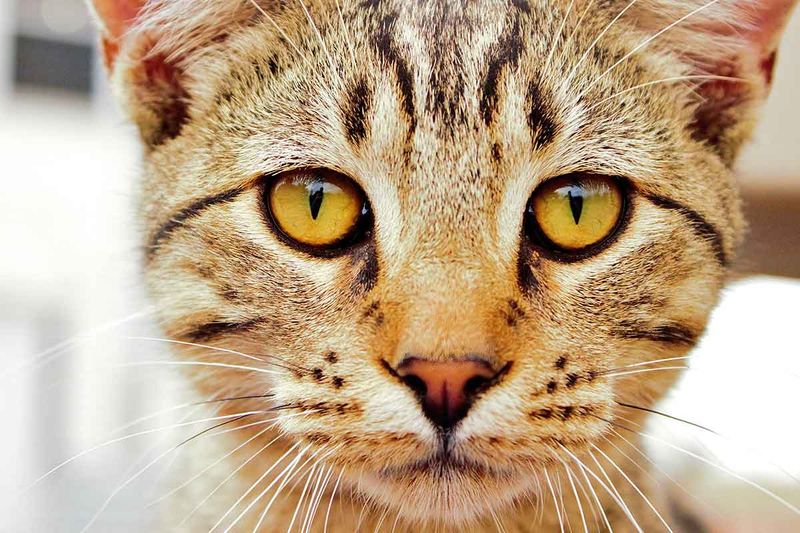
Avoidance of eye contact can signal discomfort in cats. Picture a cat that now looks away when you gaze at it, unlike before.
This behavior might indicate fear or unease. Consider a cat that once met your gaze but now avoids it. It might feel vulnerable.
Building trust through gentle interaction and creating a safe environment can encourage positive eye contact again, restoring a sense of security.
Excessive Yawning
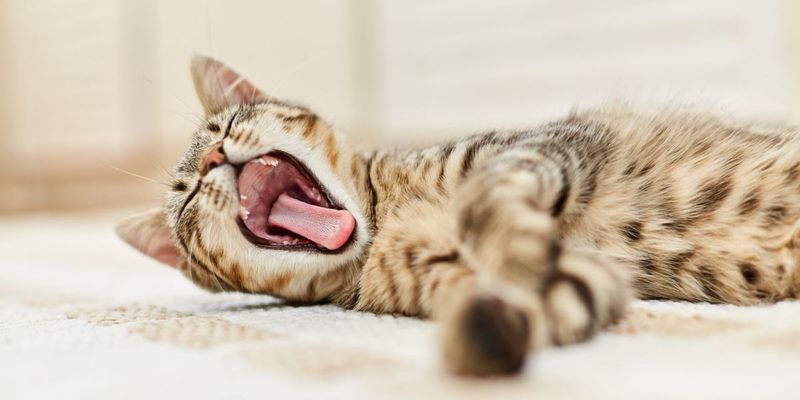
Excessive yawning in cats may point to stress. Visualize a cat frequently yawning, more than its usual routine. This behavior could indicate anxiety or boredom.
Changes in the household or a lack of stimulation might trigger this. Picture a cat that resorts to yawning excessively as a coping mechanism.
Ensuring a stimulating environment with engaging toys and interaction can reduce stress-induced yawning, promoting relaxation and well-being.
Tail Tucked Between Legs
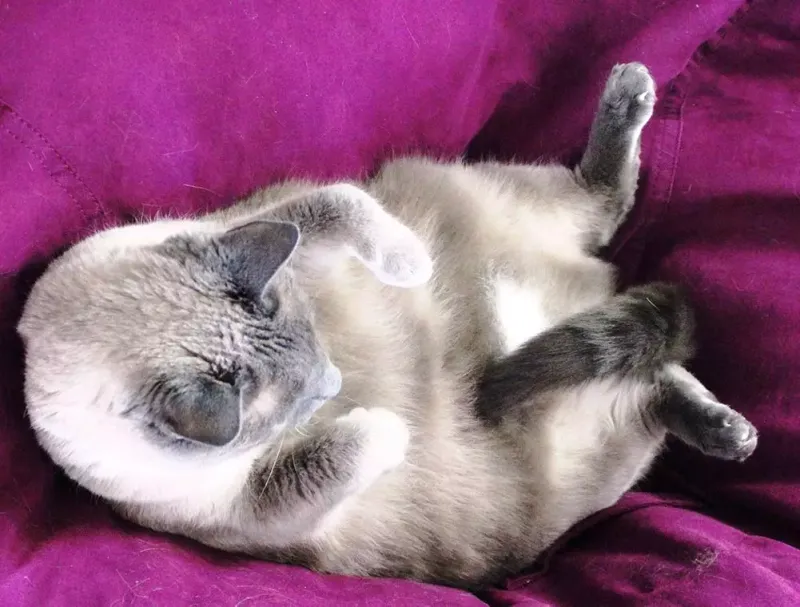
A cat’s tail communicates emotions, and a tucked tail can signal insecurity. When a cat tucks its tail between its legs, it often feels threatened or anxious. This behavior may be seen when new people visit, loud noises occur, or even seemingly minor changes disrupt their environment.
Observing your cat’s tail position is key to understanding its comfort level. Sometimes, providing a quiet space with familiar scents can help alleviate stress.
Remember, cats thrive on consistency, and maintaining a stable environment can prevent feelings of unease. A tucked tail could be your cat’s way of asking for reassurance and safety.

